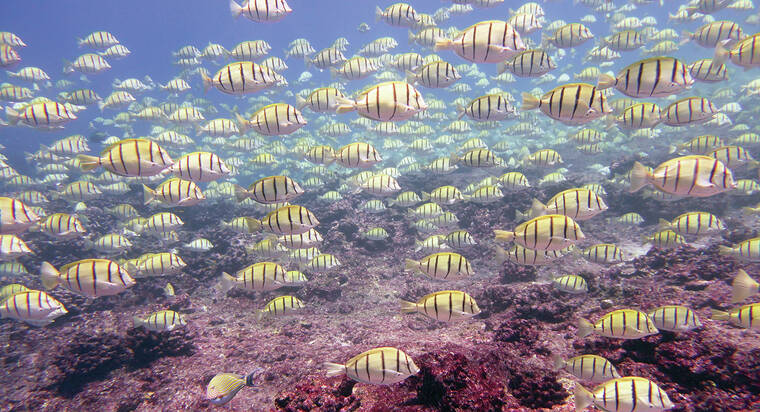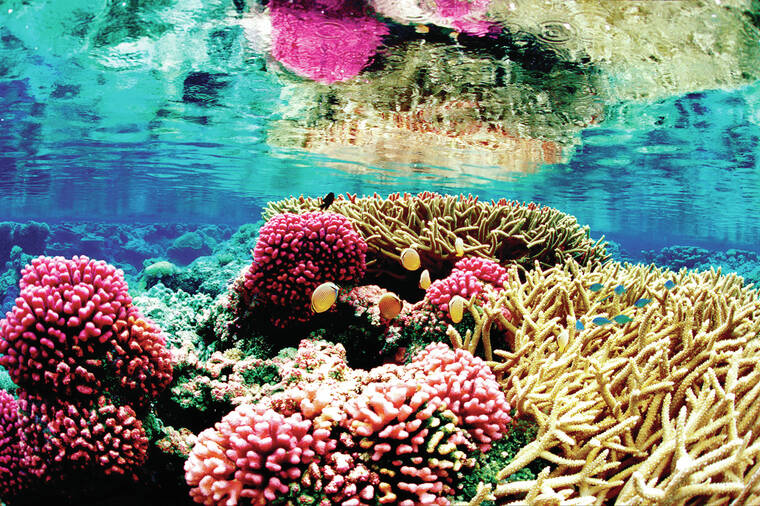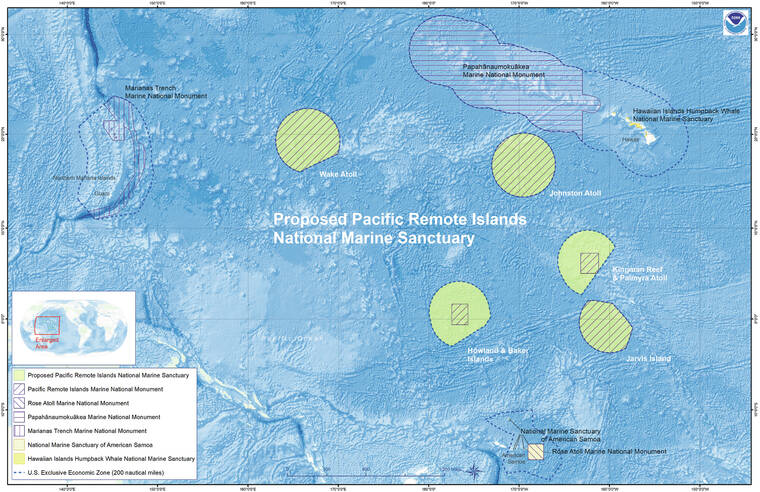LIHU‘E — The National Oceanic and Atmospheric Administration is set to draft a management plan designating 770,000 square miles of the Pacific Ocean as a National Marine Sanctuary which, if approved, would be the largest protected ocean area on Earth.
President Joe Biden first directed the U.S. Department of Commerce to consider initiating the designation process in late March. The NOAA Office of National Marine Sanctuaries officially launched the process on April 17.
“Fulfilling our bold conservation goals are a priority for the Biden-Harris administration and is critical to achieving these goals, as well as honoring the cultural heritage of coastal communities around the country,” said U.S. Secretary of Commerce Gina Raimondo in March, when NOAA was first directed to initiate the designation process.
Named the Pacific Remote Islands National Marine Sanctuary, the proposed designation would include all 490,000 square miles of the existing Pacific Remote Islands Marine National Monument. Created by former President George W. Bush in 2009 and expanded by former President Barack Obama in 2014, the monument encompasses Baker, Howland and Jarvis islands, Johnston, Wake and Palmyra atolls; and Kingman Reef.
The monument status has provided several federally enforced
environmental protections, including a ban on commercial fishing, resource destruction and extraction and waste dumping. Sanctuary designation would allow NOAA to augment these protections.
Additionally, NOAA’s sanctuary proposal would create protections within the full extent of the U.S. Exclusive Economic Zone, totaling approximately 287,000 square miles of ocean.
Described in 2009 by the Bush Administration as being “an important part of the most widespread collection of marine- and terrestrial-life protected areas on the planet under a single country’s jurisdiction,” the regions’ diverse habitats and pristine reefs provide a haven for a variety of fish, invertebrates, seabirds, sea turtles and marine mammals — many found nowhere else in the world.
Several threatened, endangered and depleted species thrive in the area, including green and hawksbill sea turtles, giant clams and oceanic whitetip sharks. Additionally, both Palmyra Atoll and Kingman Reef support higher levels of coral diversity than any other atoll or reef island in the central Pacific.
However, these oceanic regions face several existential threats, largely from human interference.
“Ecosystems and cultural resources of the Pacific Remote Islands are increasingly under pressure from threats such as marine debris, invasive species and climate change,” said Rick Spinrad, NOAA administrator.
By proposing to designate the region as a National Marine Sanctuary, NOAA hopes to protect the vast ecosystems from further damage.
Following the submission of more than 50,000 public comments, NOAA is set to review the comments and begin developing a draft management plan and environmental impact statement.
On top of conservation efforts, Biden has directed the Commerce Department and the Department of the Interior to work with regional Indigenous cultural leaders to rename the Pacific Remote Islands National Monument — and potentially the islands themselves — to honor the area’s heritage, ancestral pathways and stopping points for Pacific Island voyagers, as well as to to provide recognition for young Native Hawaiian men sent to secure U.S. territorial claim to the islands leading up to World War II.
“Native Hawaiian, Samoan, Chamorro, Carolinian and many other Pacific Island Ingigenous Peoples have voyaged across this vast expanse of the Central and Western Pacific Ocean over thousands of years, interpreting the stars, winds and currents with great skill and proficiency to settle in trade and commerce, and exchange knowledge and cultures among distant communities,” wrote NOAA in an online statement.
•••
Jackson Healy, reporter, can be reached at 808-647-4966 or jhealy@thegardenisland.com.







